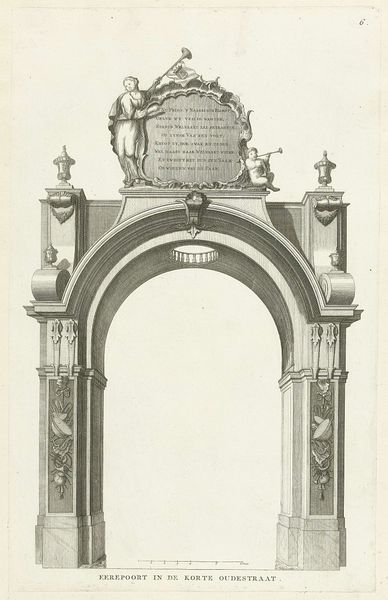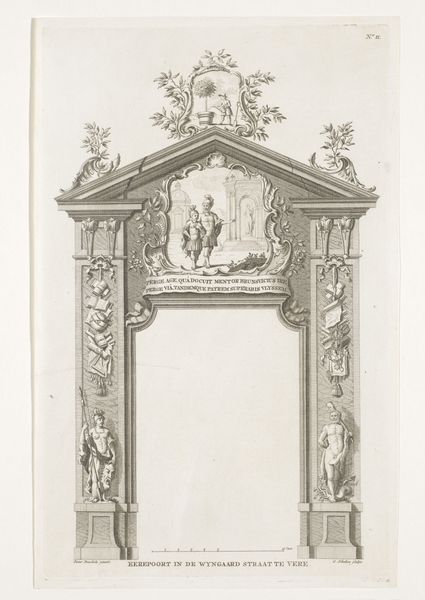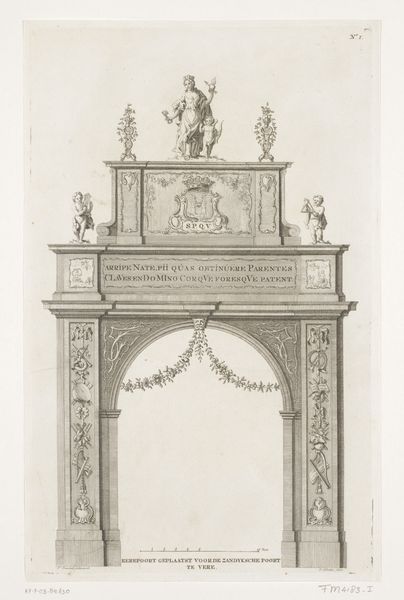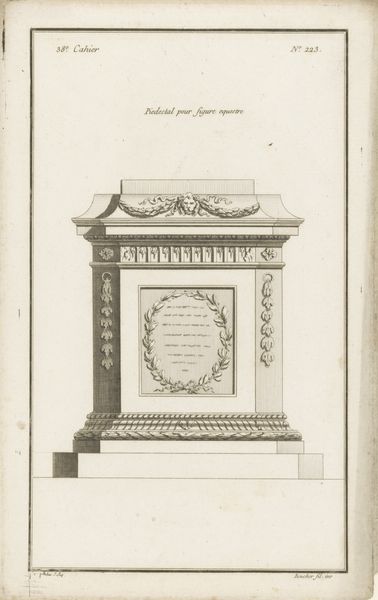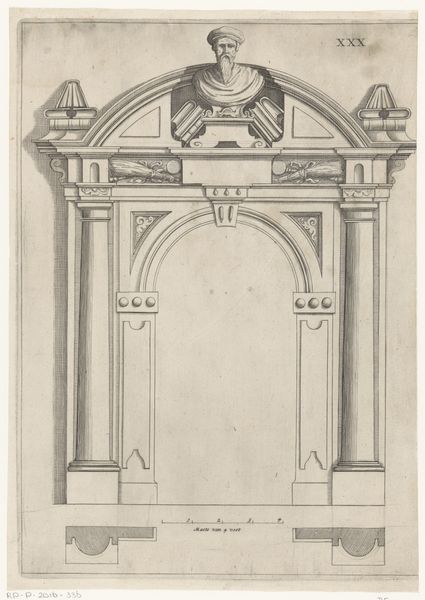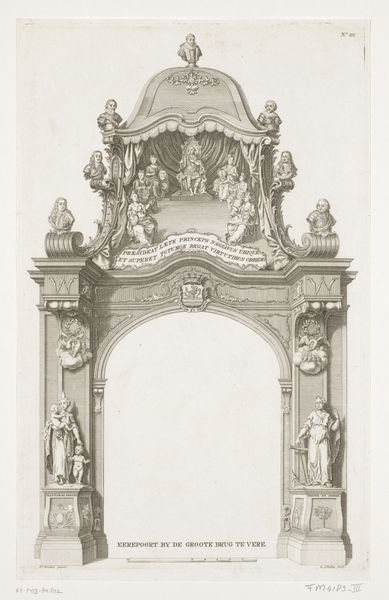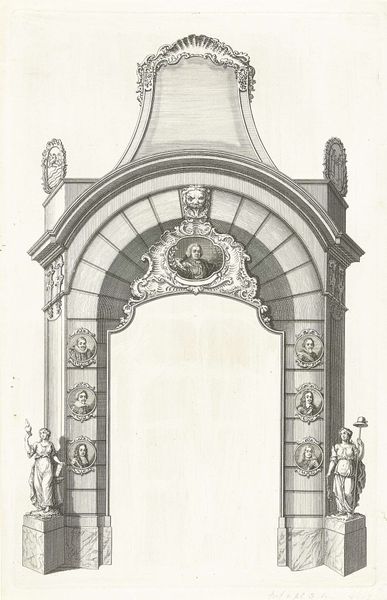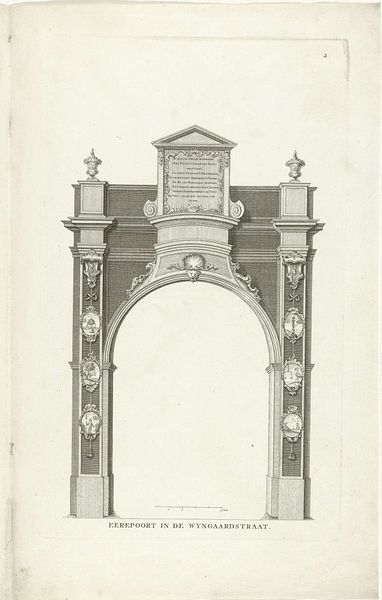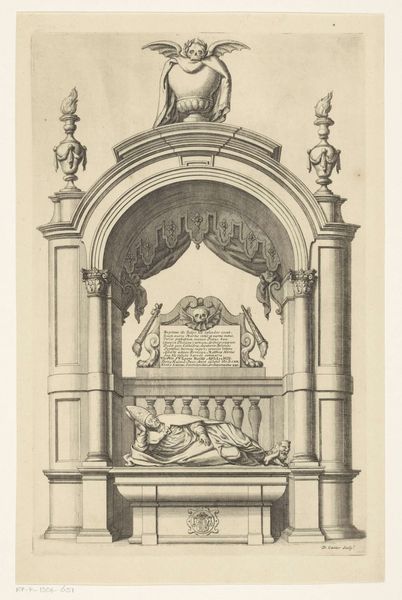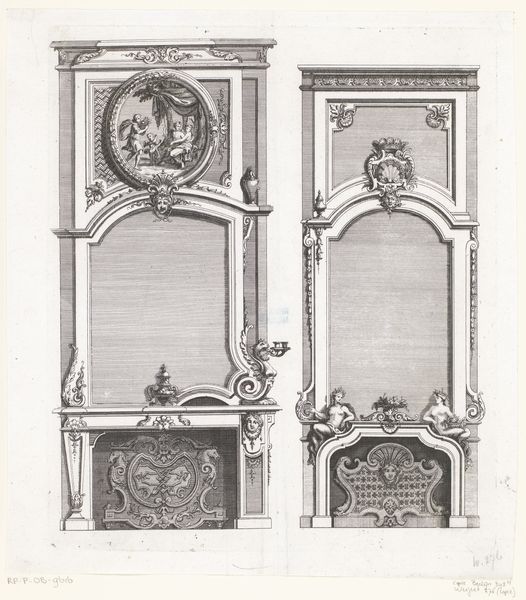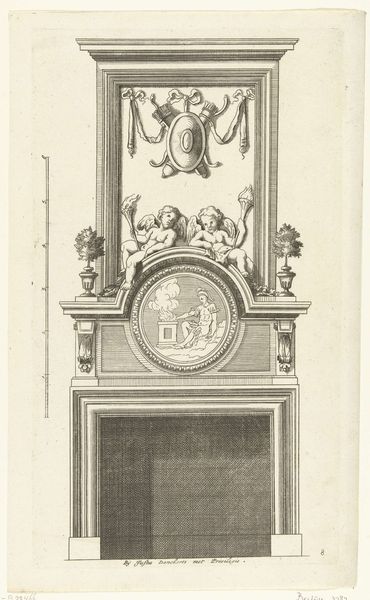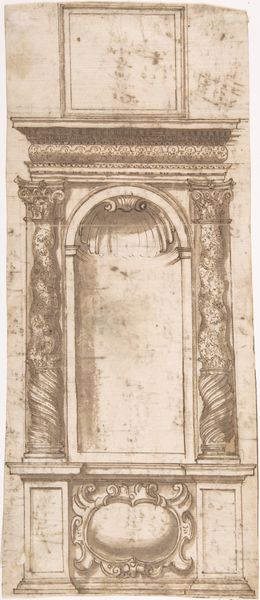
Erepoorten bij de intocht van Willem V te Veere (Nr. VI), 1766 1766 - 1767
0:00
0:00
gerardsibelius
Rijksmuseum
Dimensions: height 378 mm, width 232 mm
Copyright: Rijks Museum: Open Domain
This etching by Gerard Sibelius depicts the decorated gates for William V's arrival in Veere in 1766. Observe the angels with trumpets above the arch. These figures, reminiscent of classical depictions of Fame, herald the arrival of the Prince, connecting him to ideals of glory and renown. Such imagery echoes through history. We see similar figures in Roman triumphal arches, announcing the victories of emperors, and in Renaissance paintings where angels proclaim divine messages. Here, the angels also suggest a divine blessing upon William V's reign. It's fascinating how the motif adapts; from pagan gods to Christian messengers, and here, to symbols of civic pride and the glorification of a ruler. The archway itself symbolizes transition and honor. Think of ancient Roman arches erected to commemorate military triumphs, structures designed to evoke awe and submission. The psychological effect is palpable: to pass beneath such a structure is to acknowledge the power and authority it represents. The image is charged with collective memory, a potent blend of historical, cultural, and emotional associations. The symbols in this etching, passed down through time, tap into our deep-seated understanding of power, glory, and the cyclical nature of history.
Comments
No comments
Be the first to comment and join the conversation on the ultimate creative platform.
